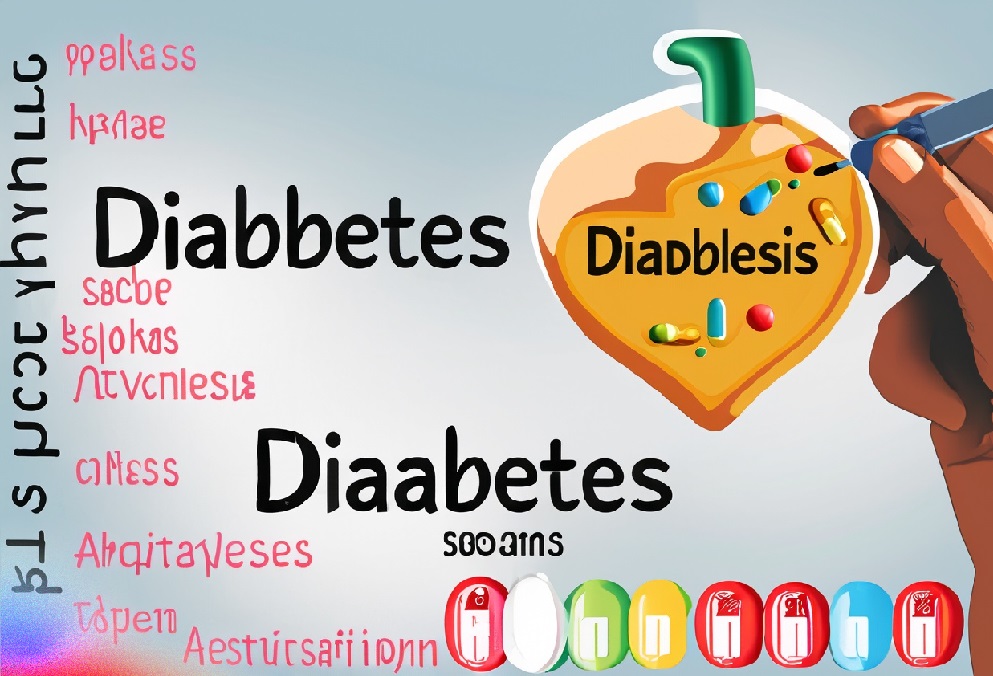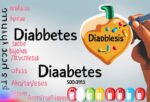
diabetes causes symptoms and treatment
In an increasingly fast-paced and modern world, chronic diseases have emerged as significant health challenges. Among them, diabetes stands out as one of the most prevalent and concerning conditions affecting millions of lives worldwide. This article delves into the intricacies of diabetes, shedding light on its types, causes, symptoms, complications, management, and preventive measures.
- Introduction to Diabetes: A Global Epidemic
Diabetes mellitus, commonly referred to as diabetes, is a chronic metabolic disorder characterized by elevated blood glucose levels. This condition arises due to a deficiency in insulin production or the inability of cells to utilize insulin effectively. Insulin is a hormone produced by the pancreas that facilitates the entry of glucose into cells, thereby regulating blood sugar levels.
- Types of Diabetes
There are three primary types of diabetes:
Type 1 Diabetes: This form of diabetes results from an autoimmune response that attacks and destroys the insulin-producing cells in the pancreas. Individuals with Type 1 diabetes require lifelong insulin injections to manage their blood sugar levels.
Type 2 Diabetes: Type 2 diabetes is often associated with insulin resistance, wherein cells do not respond adequately to insulin. This type is closely linked to lifestyle factors such as obesity, sedentary behavior, and poor dietary choices.
Gestational Diabetes: Gestational diabetes occurs during pregnancy when hormonal changes disrupt insulin action. While it typically resolves after childbirth, women who experience gestational diabetes are at a higher risk of developing Type 2 diabetes later in life.
- Causes and Risk Factors
Several factors contribute to the development of diabetes:
Genetics: A family history of diabetes increases one’s susceptibility to the condition.
Obesity: Excess body weight, particularly abdominal obesity, is a significant risk factor for Type 2 diabetes.
Physical Inactivity: A sedentary lifestyle reduces the body’s ability to utilize insulin effectively.
Unhealthy Diet: Consuming high amounts of refined sugars, saturated fats, and processed foods can contribute to insulin resistance.
Age: The risk of Type 2 diabetes increases with age, especially after the age of 45.
Gestational Factors: Women who experience gestational diabetes or give birth to large babies are more likely to develop Type 2 diabetes.
diabetes causes symptoms and treatment
- Symptoms and Diagnosis
Common symptoms of diabetes include excessive thirst, frequent urination, unexplained weight loss, fatigue, blurred vision, slow healing of wounds, and recurring infections. A blood test known as the glycated hemoglobin (HbA1c) test helps diagnose diabetes by measuring average blood sugar levels over the past two to three months.
- Complications
Untreated or poorly managed diabetes can lead to a range of severe complications:
Cardiovascular Complications: Diabetes significantly increases the risk of heart disease, stroke, and high blood pressure.
Neuropathy: High blood sugar levels can damage nerves, leading to numbness, pain, and loss of sensation in the extremities.
Nephropathy: Diabetes can damage the kidneys, impairing their ability to filter waste from the blood.
Retinopathy: Elevated blood sugar levels can damage the blood vessels in the eyes, potentially leading to vision loss.
Foot Ulcers and Amputations: Nerve damage and poor blood circulation in the feet can lead to ulcers and infections, sometimes necessitating amputation.
- Management and Treatment
Managing diabetes requires a holistic approach that incorporates lifestyle changes, medication, and regular medical check-ups:
Healthy Eating: A balanced diet rich in whole grains, lean proteins, fruits, vegetables, and healthy fats helps regulate blood sugar levels.
Eating Right with Diabetes: A Guide to Food Choices
Diet plays a crucial role in managing diabetes effectively. Making informed food choices can help regulate blood sugar levels, maintain a healthy weight, and reduce the risk of complications. Here’s a breakdown of what to eat and what to avoid when living with diabetes.
What to Eat:
- Fiber-Rich Foods: Include whole grains like brown rice, quinoa, oats, and whole wheat bread in your diet. Fiber helps slow down the absorption of sugar and improves digestion.
- Lean Proteins: Opt for lean sources of protein such as skinless poultry, fish, beans, lentils, tofu, and low-fat dairy products. Protein helps stabilize blood sugar levels and promotes satiety.
- Healthy Fats: Choose sources of healthy fats like avocados, nuts, seeds, and olive oil. These fats support heart health and aid in managing blood sugar.
- Non-Starchy Vegetables: Load up on colorful, non-starchy vegetables like leafy greens, broccoli, cauliflower, peppers, and zucchini. These vegetables are low in carbohydrates and rich in vitamins, minerals, and antioxidants.
- Fruits in Moderation: Enjoy fruits like berries, apples, pears, and citrus fruits in moderation. Focus on whole fruits rather than fruit juices, and be mindful of portion sizes.
- Dairy or Dairy Alternatives: Choose low-fat or fat-free dairy products, or opt for fortified plant-based milk alternatives like almond milk, soy milk, or oat milk.
- Portion Control: Pay attention to portion sizes to prevent overeating and control carbohydrate intake. Measuring food portions can help manage blood sugar levels effectively.
diabetes causes symptoms and treatment
What to Avoid or Limit:
- Refined Carbohydrates: Minimize or avoid foods made from refined grains, such as white bread, white rice, and sugary cereals. These can cause rapid spikes in blood sugar levels.
- Sugary Foods and Beverages: Limit sugary snacks, candies, pastries, and sugary drinks like soda and fruit juices. These can lead to sharp increases in blood sugar levels.
- Saturated and Trans Fats: Reduce consumption of foods high in saturated and trans fats, such as fried foods, processed snacks, and fatty cuts of meat. These fats can contribute to heart disease.
- Processed Foods: Avoid heavily processed foods that often contain added sugars, unhealthy fats, and high sodium content. Read labels and choose minimally processed options.
- Salty Foods: Limit foods high in sodium, as they can contribute to high blood pressure. Opt for low-sodium seasonings and avoid excessive use of salt.
- Alcohol: Consume alcohol in moderation, if at all. Drinking alcohol can affect blood sugar levels and interact with diabetes medications.
- High-Glycemic Index Foods: Foods with a high glycemic index (GI) can cause rapid spikes in blood sugar. These include foods like white potatoes, white rice, and sugary cereals.
Tips for Meal Planning:
- Balanced Meals: Aim for balanced meals that include a combination of lean protein, healthy fats, and complex carbohydrates.
- Regular Eating Schedule: Stick to regular meal times to help regulate blood sugar levels and prevent large fluctuations.
- Carbohydrate Counting: Learn to count carbohydrates to better manage insulin and medication dosages.
- Snack Wisely: Choose nutritious snacks that combine protein and fiber to help keep blood sugar levels stable between meals.
- Stay Hydrated: Drink plenty of water throughout the day to stay hydrated and support overall health.
Physical Activity: Regular exercise improves insulin sensitivity and aids weight management.
Medication: People with Type 1 diabetes require insulin therapy, while those with Type 2 diabetes may need oral medications or insulin injections.
Blood Sugar Monitoring: Regularly monitoring blood sugar levels helps individuals make informed decisions about food, physical activity, and medication.
diabetes causes symptoms and treatment
- Prevention and Lifestyle Modifications
The good news is that Type 2 diabetes can often be prevented or delayed through simple lifestyle changes:
Maintain a Healthy Weight: Achieving and maintaining a healthy weight reduces the risk of insulin resistance.
Engage in Physical Activity: Regular exercise improves insulin sensitivity and overall metabolic health.
Choose Nutrient-Rich Foods: Opt for whole grains, lean proteins, healthy fats, and plenty of fruits and vegetables.
– Limit Sugary and Processed Foods: Reduce the consumption of sugary beverages, sweets, and highly processed foods.
Monitor Blood Pressure and Cholesterol: Keeping blood pressure and cholesterol levels in check lowers the risk of cardiovascular complications.
- The Role of Education and Awareness
Public education and awareness campaigns are crucial in combating the diabetes epidemic. Understanding the risk factors, symptoms, and preventive measures empowers individuals to take charge of their health. Schools, workplaces, and communities can play a significant role in promoting healthy behaviors and providing access to resources for diabetes management and prevention.
- Conclusion
Diabetes is a complex and widespread condition that demands attention from individuals, healthcare providers, and society at large. By understanding the different types, causes, symptoms, and complications of diabetes, as well as adopting healthy lifestyle choices, we can work together to mitigate the impact of this global epidemic. Through education, awareness, and proactive management, we can strive for a healthier future and a world where diabetes is under control.
